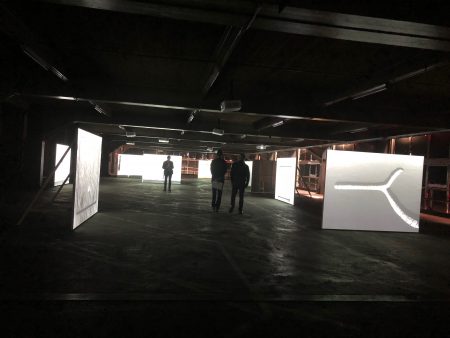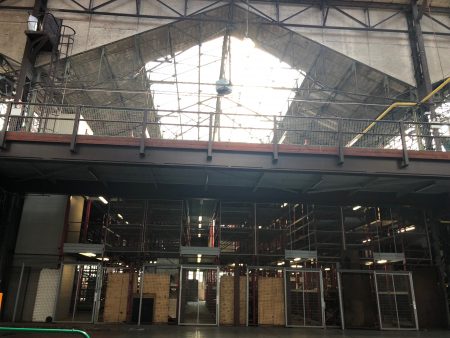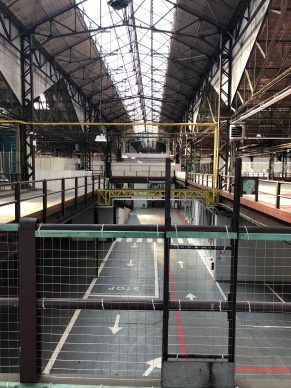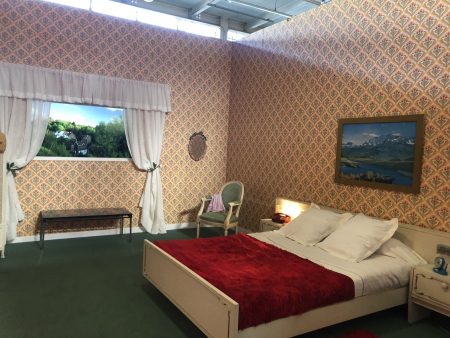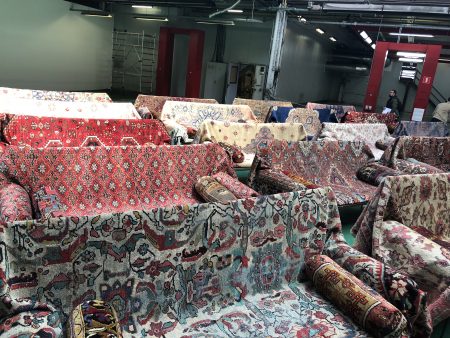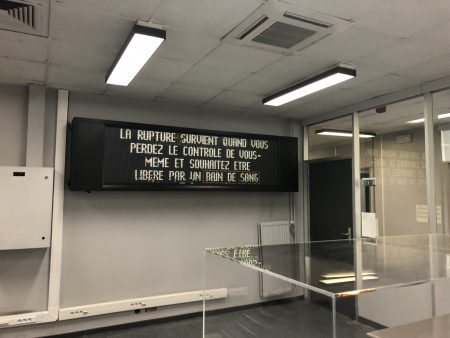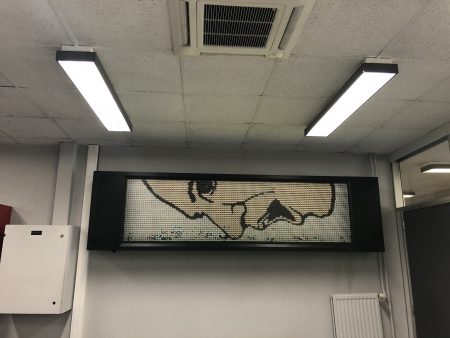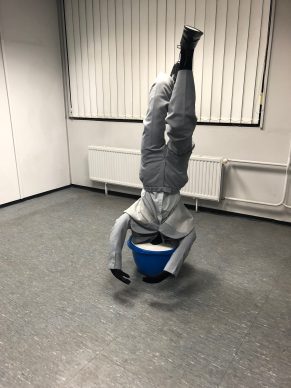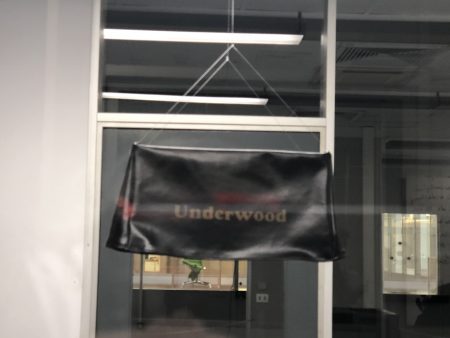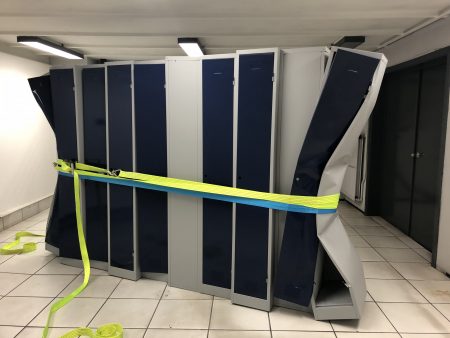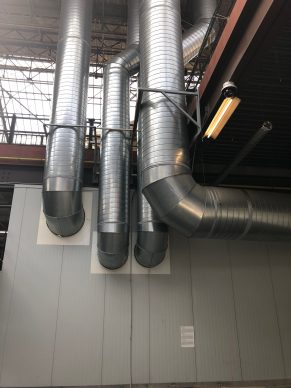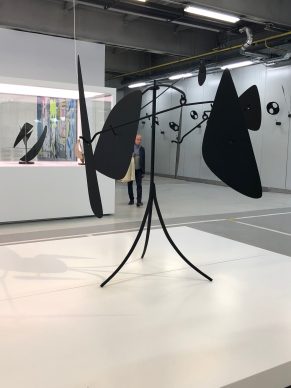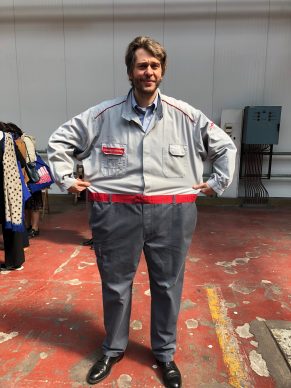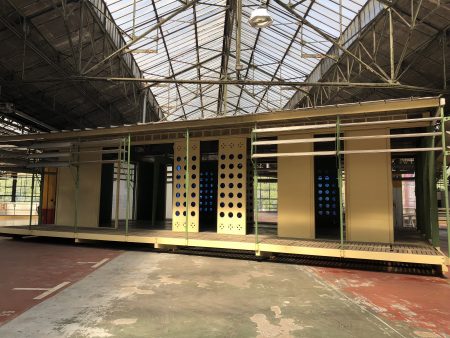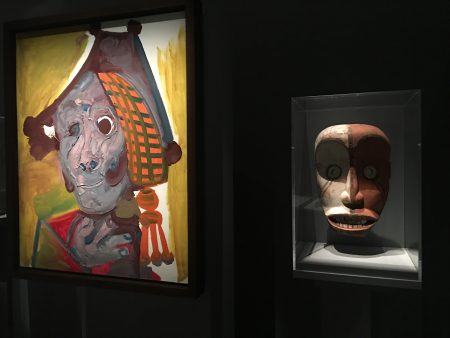The Centre Pompidou continues to multiply. Following the opening of a new branch in the East of France in Metz, an outpost in Malaga, and in anticipation of next year’s opening in Shanghai of a new Asian version of the modern art museum in an old aircraft hangar (2300 m2 at the very chic West Bund), now there’s an impressive Belgian version of the Centre Pompidou.
We have often seen exhibitions in areas of industrial wasteland and the site itself often has a decadent charm, vacated by its former workers.
But here the artistic offerings are bolstered by the national modern art museum’s exceptional collections.
Adding to that the fact that the space measures no less than 38,000 m2, we emerge dumbfounded by this happy marriage taking place in the former Citroën Garage in Brussels. This place was once the site of assemblage, exhibition and sale of this brand of automobiles. It was the Region of Brussels that proposed to enter into partnership with the Centre Pompidou for ten years to create Kanal-Centre Pompidou, a contemporary art museum that will serve as the basis for a transformation of the district (it is located a few hundred metres from the municipality of Molenbeek, which became famous after the terrorist attacks of 2015 for being an Islamist hub) (1).
Up until June 2019 and before the huge renovation works, the former garage is being used as it is by the teams of French curators for exhibitions, which don’t feature any canvases for conservation reasons.
The president of the Centre Pompidou Serge Lasvignes justifies this new initiative:
In all, the 300 artworks have been arranged with wit and in situation within these labyrinthine spaces.
Bernard Blistene, the director of the museum, outlines the idea behind this unique exhibition layout:
For example, the accounting offices house conceptual artworks such as a slipcover for a typewriter placed on a stand, imagined in 1916 as a “ready-made” (a work that becomes art through the will of the artist alone) by Marcel Duchamp.
The sheet metal workshop exclusively contains works in sheet metal and this is where we become aware of the excellence of the Centre’s collections (120,000 items). Here we find works ranging from a painted harlequin on metal from 1923 by the cubist Juan Gris to an enamelled painting on metal by the pop artist Roy Lichtenstein depicting a hamburger from 1963, not to mention the “Tropical house” from 1951 by Jean Prouvé that’s ventilated and easily dismantled.
And who assumes authorship of these thick aluminium pipes? Some are by Robert Rauschenberg and form a fountain conceived between 1962 and 1965 by the American genius, while others are part of the architecture of the garage.
The confusion that this almost produces allows for a playful aspect that pushes us to question the nature of contemporary art.
Clearly minimal art and video installations find an unconventional setting in this space.
At the apex of what the garage staff once called “the show room” there is an exceptional video installation by the British filmmaker Anthony McCall from 1974. Four projectors only emit enormous shafts of light.
You can move through the substance of the light, which gives the illusion of being palpable. This work was exhibited at Documenta in 1977.
It is worth experiencing, along with the rest of the 38,000 m2 of the Kanal-Centre Pompidou.
(1)Since the site’s opening and over the course of ten years the Region of Brussels is giving 2 million euros a year to the Centre Pompidou for the curation and loan of these artworks. Kanal currently has an acquisition budget of 250,000 euros a year.
Support independent news on art.
Your contribution : Make a monthly commitment to support JB Reports or a one off contribution as and when you feel like it. Choose the option that suits you best.
Need to cancel a recurring donation? Please go here.
The donation is considered to be a subscription for a fee set by the donor and for a duration also set by the donor.


